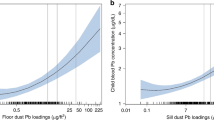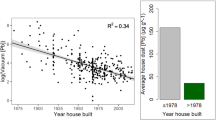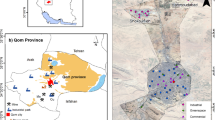Abstract
Comparability of dust lead measurements has been a difficult problem due to different sampling and analysis techniques. This paper compares two dust sampling techniques, the U.S. Department of Housing and Urban Development (HUD) dust wipe method and the Lioy, Wainman, Weisel (LWW) sampler. The HUD method specifies using a moist towelette to pick up as much dust as possible in a specified area and estimates total lead loading. The LWW sampler collects the dust on preweighed wetted filter media, and provides greater standardization of the sampling path and pressure applied. LWW samples were analyzed using inductively coupled plasma mass spectronomy (no samples below minimum detection limit), while HUD samples were analyzed using flame atomic absorption (32% of samples below minimum detection limit). A bootstrapping technique was used in the analysis to contend with those HUD samples below the minimum detection limit. Mixed model equations were generated to predict HUD values from LWW results, and to examine the effects of sampling location, time, and method. The results indicate that the two samplers performed similarly under field conditions, although the LWW sampler produced consistently lower lead loading estimates. LWW values that predicted HUD lead clearance values of 100 μg/ft2 for floors and 500 μg/ft2 for window sills were 72 μg/ft2 and 275 μg/ft2, respectively. To examine internal reproducibility, duplicate samples were taken using both the HUD and LWW methods. Correlation results within paired samples indicated a statistically significantly higher (p<0.001) internal reproducibility for lead loading, for the LWW sampler (r=0.87), than for the HUD method (r=0.71). Some of the differences appeared to be related to the analytical methods.
This is a preview of subscription content, access via your institution
Access options
Subscribe to this journal
Receive 6 print issues and online access
$259.00 per year
only $43.17 per issue
Buy this article
- Purchase on Springer Link
- Instant access to full article PDF
Prices may be subject to local taxes which are calculated during checkout
Similar content being viewed by others
Author information
Authors and Affiliations
Corresponding author
Rights and permissions
About this article
Cite this article
RICH, D., YIIN, LM., RHOADS, G. et al. A field comparison of two methods for sampling lead in household dust. J Expo Sci Environ Epidemiol 9, 106–112 (1999). https://doi.org/10.1038/sj.jea.7500006
Received:
Accepted:
Published:
Issue Date:
DOI: https://doi.org/10.1038/sj.jea.7500006



